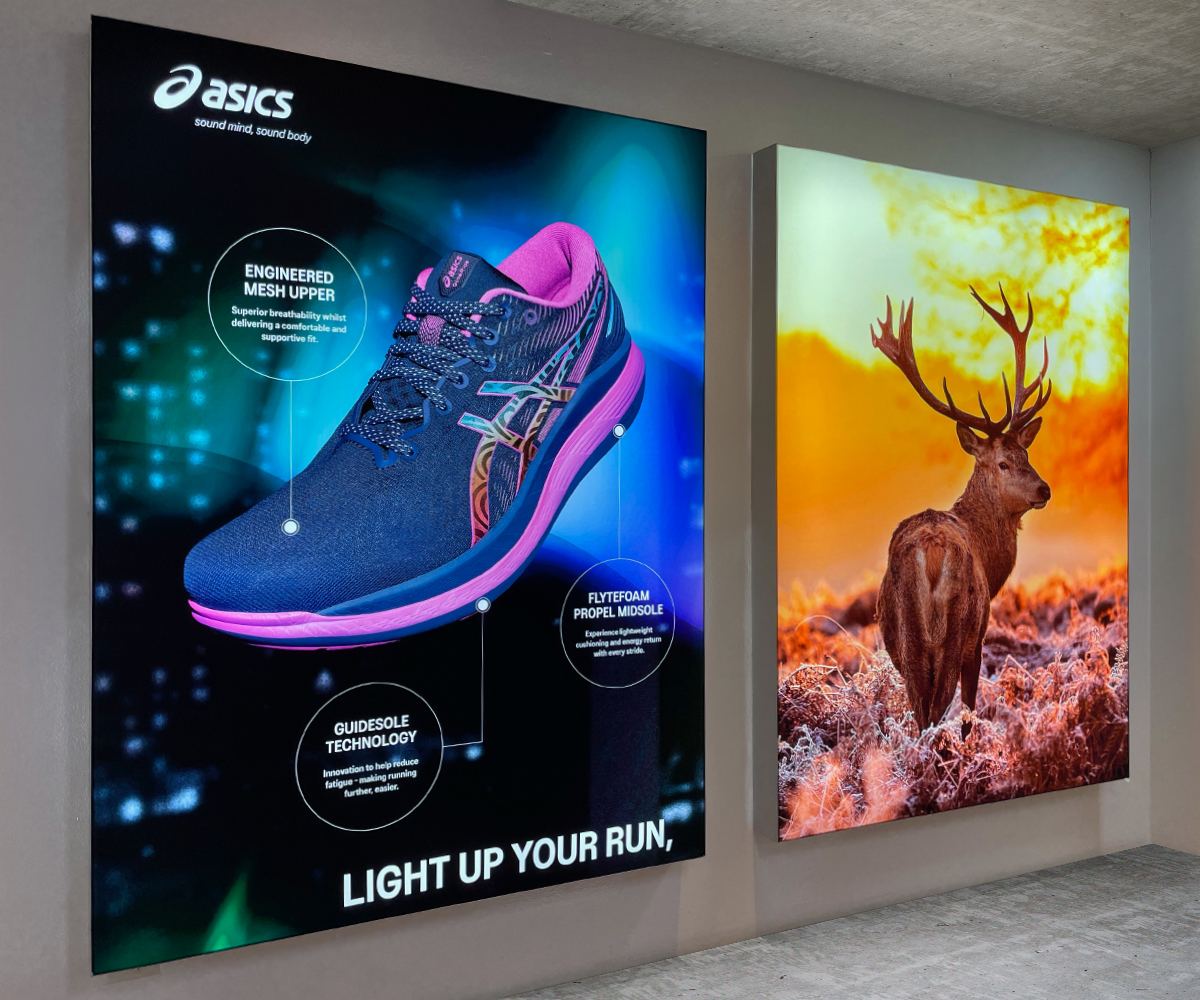

Transfer Dye Sublimation Images supplied by
Blueprint Digital
I have been asked this question numerous times, and I have seen wonderful results from both ink types. However the results are really dependant on many factors like using the “right” fabric for your ink, using the right ink for purpose, and most importantly, how you profile those inks to achieve vibrant, radiant colours.
A backlit fabric needs to have all the concentration of pigment as close to the viewing surface as possible, to ensure a maximum vibrancy.
Ink that penetrates into the fabric too much, either due to fabric construction or print method (direct dye sublimation), may look vibrant in normal light, but will appear bleached and faded when put up into a lightbox.
A UV, Latex or transfer dye sublimation print with all the ink residing on or near the surface will have strong, vibrant colour when lit from the rear.
If your method of choice is UV or Latex inks, then a double strike, with your heat lamps at maximum, is important.
If focusing on Transfer Dye Sublimation, then it is important to manage the ink profile, dwell time and pressure of your calendar to ensure the sublimation penetrates shallowly but that you transferred enough ink to that surface to ensure vibrancy.

Example of a freestanding lightbox used to accentuate a Visual Merchandise prop – image courtesy of
Blueprint Digital
Ink Profile is very important in dye sublimation, as there are a number of parameters that need to be in harmony and balanced to achieve a good result:
- ink limit
- dwell time
- temperature
There are two other factors that are very important to choosing the right fabric for your backlit prints:
- The fabric should be woven or knitted in such a way as to not allow pin holes of light through
- The fabric should be able to be folded for transportation, but not leave a bruise in the ink or fabric when unfolded and mounted in the frame.

Myer Perth – image courtesy of Blueprint Digital
Coritex offers 2 types of fabric for dye sublimation and three varieties for UV prints.
- D or S 16 Stirling, a warp knit fabric available in two weights and suitable for direct, transfer Dye Sublimation as well as Latex prints.
- D or S 17 Windsor, a woven, multi filament polyester yarn, suitable for all the inks above.
- E23, a coated multi filament polyester yarn. The coating acts as a diffusor and a key surface for Latex and UV to hold onto for a smooth finish. It is only suitable for Latex and UV inks. Soon to be available in RPET, using yarn from recovered and recycled polyester.
- E21, a new lightweight, coated multifilament polyester yarn suitable for UB and Latex inks.
If you’d like to find out more reach out to us through the link below.
We ship Australia wide from our warehouses in Sydney and Melbourne. Orders received by 10am, are despatched same day.
T: 1800957861
If you have a problem that needs a unique fabric solution, we would love to be part of the solution.


Julian Lowe has been involved in Dye Sublimation on textiles for over 23 years, with extensive experience in flag & banners, visual merchandise & exhibition, SEG: front lit, backlit & block-outs, apparel and soft furnishings. He has worked with direct & transfer dye sublimation processes, reactive & acid Dye sets, as well as UV inks for textiles. Julian is currently the National sales and Business Development Manager for Coritex.



